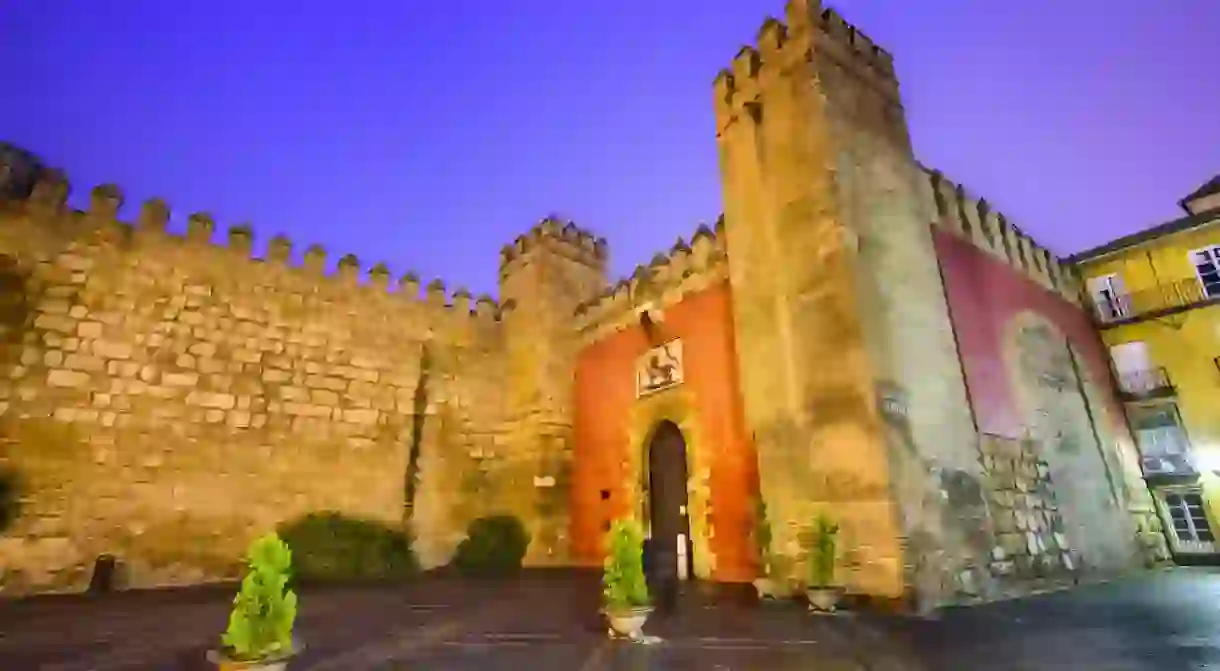21 Photos That Prove Seville's Alcazar Is a Real Life Fairytale

The Royal Alcazar Palace in Seville is a centuries-old complex of beautiful buildings, magical courtyards and colourful gardens. Still used as the Seville residence for the (incredibly lucky) Spanish royal family, it is the oldest continually-inhabited royal palace in Europe. And, as the 21 stunning pictures below illustrate, it is also something straight out of a fairytale.
The famous 19th century Lion’s Gate is the principal entrance to the Alcazar: its arresting, maroon-red facade and chunky turrets hint at the architectural treasures awaiting within.

Inside the palace, archways overgrown with colourful, sweet-smelling flowers frame the Alcazar’s buildings and, beyond them, Seville’s great cathedral.

Corridors naturally shaded by overhanging greenery link up the various sections of the palace complex, which was started in the 10th century by the Moorish Umayyad dynasty.

The tropical greenery of the gardens contrasts stunningly with the unblemished blue of an Andalusian sky.

Fountains are scattered throughout the enchanting gardens, which form an extensive maze of pathways, patios and secret corners.

The orange trees for which Seville is famous are also to be found within the Alcazar Palace, especially in its many patios and courtyards.

Well-ordered gardens were an integral part of all royal palaces in Moorish Spain, providing their residents with aesthetic pleasure as well as fruit and vegetables.

Route maps for finding your way around the gardens are available at the palace’s entrance. Another way to explore them is to simply get lost.

One of the most striking features of the Alcazar is the blend of architectural styles it brings together. This mixture speaks eloquently of the Moorish and Christian cultures that have shaped Seville – but there are many Renaissance and Gothic touches, too.

One of the palace’s most popular features are the Baths of Lady María de Padilla – cavernous rainwater tanks named after the mistress of Peter the Cruel, King of Castille and Leon between 1350 and 1369.

Their elegant archways are perfectly reflected in the still waters.

Elsewhere in the Alcazar, you stumble upon secret little corners that are, in their way, every bit as beautiful as the palace’s main features.

Of which the most famous is the breathtaking Courtyard of the Maidens – just as impressive as anything you’ll see in the much larger Alhambra of Granada.

It is said that the Courtyard of the Maidens takes its name from the fact that the Moors demanded one hundred virigins every year from the Christian territories of Spain.

When exploring the elaborate interiors of the Alcazar, don’t forget to look up: its ceilings are some of the buildings most incredible features. This one covers the Patio of the Dolls.

But the most spectacular of the Alcazar’s ceilings is found in the Ambassador’s Hall.

Meanwhile, internal walls bear the intricate, repeated patterns that were a staple of Moorish interior design. In some rooms, not an inch of wallspace has been neglected.

The effect in some of the Alcazar’s rooms is almost hypnotising.

Many of the lower sections of the palace’s internal walls are decorated with ceramic tiles – a product for which Seville’s former gypsy quarter of Triana is famous.

Light and shadows create unusual effects in the Alcazar, further enhancing the palace’s enchanting ambience.

They can make the same patio or courtyard look completely different, depending on the time of day you visit. But whenever you do, the memories of a tour around this fairytale-like building will stay with you for a long time after leaving.














